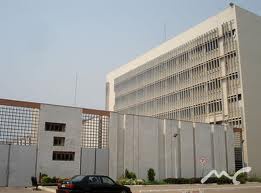
...holds policy rate at 16%
Consumer inflation is likely to end the year outside the official target band of 9-11 percent, the Bank of Ghana (BoG) said on Wednesday.
Addressing the press after the monetary-policy committee (MPC) -- the BoG’s key decision-making body -- met this week, Governor Henry Kofi Wampah said the risks to inflation and growth are balanced for the next few months; but he added that the annual inflation rate, which fell to 11.5 percent in August, will miss the official target in 2013.
A potential increase in utility prices and uncertainty in commodity prices pose a risk to inflation, he said, adding that this could however be tempered by the upcoming harvest season and lower global inflation.
“Our forecast indicates that we are slightly above the band. But barring any further shocks, we should be able to return to the band by the first half of next year,” he said.
The MPC held its policy lending rate unchanged for a second consecutive meeting at 16 percent this week, noting that core inflation, which excludes fuel and food prices, has been easing.
The BoG has traditionally aimed to keep inflation below 10 percent, in line with the criteria adopted by countries in the West African Monetary Zone (WAMZ) -- which desire to have a common currency by 2015.
Inflation rose for six straight months from January on the back of significant jumps in fuel prices after subsidies were cancelled. The rate peaked at 11.8 percent in July before slipping to 11.5 percent last month.
“I think that we should see monetary policy to be more supportive of growth in the short-term and avoid a hawkish view, as fuel price hikes do not necessarily reflect a deterioration in underlying inflation,” said Sampson Akligoh, Head of Research at Databank in Accra, before the MPC announced its decision on Wednesday.
Akligoh said there is need for a “balancing act” by the BoG to support job-creation even as it works to rein in inflation. The MPC said annual growth of private sector credit moderated to 28.1 percent in nominal terms at the end of July, from 41.3 percent a year ago. In real terms, annual private sector credit expanded by 15 percent compared to 29 percent in July 2012.
Banks’ assets grew at an annual pace of 30 percent in July, reaching GH¢31.6billion. Around 48.5 percent of the assets represented loans and advances. The industry’s non-performing loans ratio was 12.9 percent in July compared to 13.4 percent a year ago. Excluding the loss category, the ratio dropped to 5.3 percent from 6.4 percent in the same period.
External sector
Ghana’s trade deficit improved to GH¢1.8billion in the first eight months of the year, from a gap of GH¢2.5billion in August 2012. Merchandise exports rose by 4.1 percent to US$9.8billion, but imports declined from US$11.9billion to US$11.6billion as international commodity prices weakened.
The cedi depreciated by 3.9 percent against the dollar in the period, and “going forward it is expected that pressure in the foreign exchange markets will ease further with the impending inflows of the cocoa syndication loan and the Multi-Donor Budget Support (MDBS) disbursements, subject to seasonal demand pressures,” Dr. Wampah said.